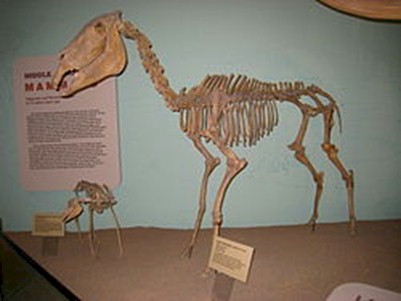Hagerman horses (Equus simplicidens), also called the
Hagerman zebras or the American zebras, were a North American species of equine
from the Pliocene epoch and the Pleistocene epoch. It is one of the oldest
horses of the genus Eqius and was discovered in 1928 in Hagerman, Idaho - it is
the state fossil of Idaho.
Hagerman horses first appeared about 3.5 million years ago. They
were approximately 110–145 centimeters (43–57 inches) tall at the shoulder. They
weighed between 110 and 385 kilograms (243 and 849 pounds). An average Hagerman
horse was about the same size as an Arabian horse. They also were relatively
stocky with a straight shoulder and thick neck, like a zebra, and a short,
narrow, donkey-like skull.
Hagerman
horses probably lived in grasslands and floodplains, which is what Hagerman,
ID, was like 4-3 million years ago. Native North American horses became extinct
about 10,000 years ago, at the same time as many other large-bodied species of
the period.

